Sarah L. Johnson's Blog, page 56
November 25, 2018
A visual preview of the winter 2018-19 season in historical fiction
The winter season is nearly upon us! What historical novels are you looking forward to over the next few months? Here are a dozen that caught my attention. What they offer: less familiar settings, new perspectives, and/or intriguing characters. I haven't read any of these yet but am looking forward to them all.

The story of two women, a child, a difficult journey, and the aftermath of war, set in Spain and southern France at the end of WWII. Now this is an eye-catching cover. Lake Union, February 2019. [see on Goodreads]
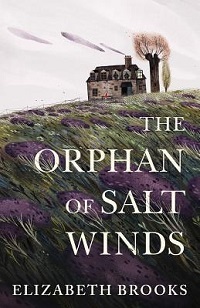
Secrets surround the marshy English landscape where a 10-year old girl arrives in 1939 to meet the couple who will adopt her. Her father's rescue of a downed German airman spurs a chain of events that haunt her, decades later, as an old woman. Readers in the UK can find it under the title Call of the Curlew. Tin House, January 2019. [see on Goodreads]
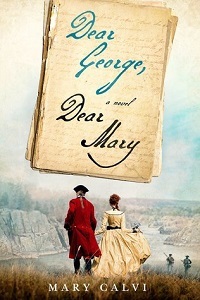
A new novel set to reveal a little-known story about America's first president: his relationship with his first love, Mary Philipse, and how it affected his views going forward. St. Martin's, February 2019. [see on Goodreads]
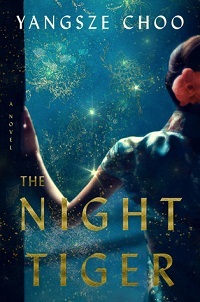
The author's second novel takes place in colonial Malaysia in the 1930s, focusing on an apprentice dressmaker working in a dance hall, a houseboy with an unusual task, and what happens when their paths collide. Flatiron, February 2019. [see on Goodreads]
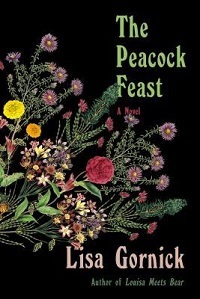
This literary saga promises intrigue surrounding glass designer Tiffany and his opulent mansions, his gardener's family, and repercussions of past choices spiraling down from 1916 over the next century. Sarah Crichton Books/FSG, February 2019. [see on Goodreads]
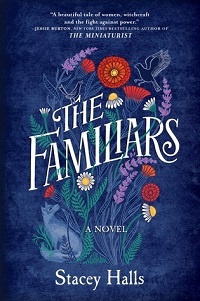
The 17th century continues to be fertile ground for new fiction. The witch trials of early 17th-century England sit at the backdrop of this debut, in which two young women - a wife desperate for a child, and a midwife accused of witchcraft - join together amid desperate circumstances. MIRA (US/Canada), Zaffre (UK), February 2019. [see on Goodreads]
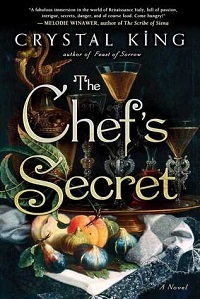
Bartolomeo Scappi was a historical figure, a famed chef in Renaissance Italy. In King's second novel (after Feast of Sorrow, also on a culinary subject), Scappi's nephew, Giovanni, searches for secrets in his late uncle's past. Atria, February 2019. [see on Goodreads]

Knowing his days are numbered, a consumptive attorney teams up with an ex-soldier to track a killer in late 18th-century Stockholm. The author's surname, Swedish for "night and day," indicates he's a descendant of one of Sweden's oldest noble families. [see on Goodreads]
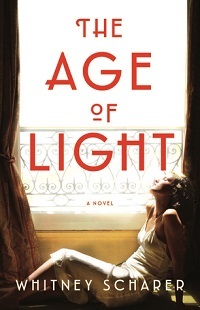
There's been considerable buzz about this literary debut, which isn't the first to reveal the story of model/photographer Lee Miller in the 20th century, but the author's style and language are receiving accolades. Little, Brown, February 2019. [see on Goodreads]
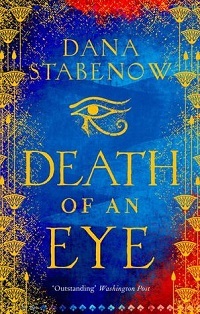
A historical mystery set in Cleopatra and her brother Ptolemy's Egypt, as she asks her friend to investigate her spy's recent murder; first in a new series. Head of Zeus, December 2018. [see on Goodreads]
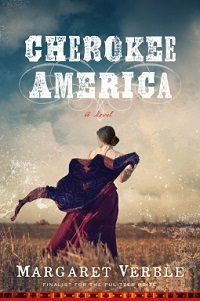
The story of Cherokee America Singer (called "Check"), a farmer and mother of five in the Cherokee Nation West of 1875, and the family dramas and culture clashes that involve her and her community. Western fiction from a perspective not seen enough in the genre. Houghton Mifflin Harcourt, February 2019. [see on Goodreads]
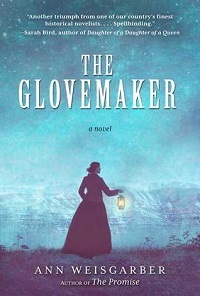
A Mormon woman, living in a remote town along a canyon floor in Utah, finds her life turned upside down when a stranger requests her help. Weisgarber's novels always show mastery of setting and character development. Skyhorse, February 2019. [see on Goodreads]

The story of two women, a child, a difficult journey, and the aftermath of war, set in Spain and southern France at the end of WWII. Now this is an eye-catching cover. Lake Union, February 2019. [see on Goodreads]

Secrets surround the marshy English landscape where a 10-year old girl arrives in 1939 to meet the couple who will adopt her. Her father's rescue of a downed German airman spurs a chain of events that haunt her, decades later, as an old woman. Readers in the UK can find it under the title Call of the Curlew. Tin House, January 2019. [see on Goodreads]

A new novel set to reveal a little-known story about America's first president: his relationship with his first love, Mary Philipse, and how it affected his views going forward. St. Martin's, February 2019. [see on Goodreads]

The author's second novel takes place in colonial Malaysia in the 1930s, focusing on an apprentice dressmaker working in a dance hall, a houseboy with an unusual task, and what happens when their paths collide. Flatiron, February 2019. [see on Goodreads]

This literary saga promises intrigue surrounding glass designer Tiffany and his opulent mansions, his gardener's family, and repercussions of past choices spiraling down from 1916 over the next century. Sarah Crichton Books/FSG, February 2019. [see on Goodreads]

The 17th century continues to be fertile ground for new fiction. The witch trials of early 17th-century England sit at the backdrop of this debut, in which two young women - a wife desperate for a child, and a midwife accused of witchcraft - join together amid desperate circumstances. MIRA (US/Canada), Zaffre (UK), February 2019. [see on Goodreads]

Bartolomeo Scappi was a historical figure, a famed chef in Renaissance Italy. In King's second novel (after Feast of Sorrow, also on a culinary subject), Scappi's nephew, Giovanni, searches for secrets in his late uncle's past. Atria, February 2019. [see on Goodreads]

Knowing his days are numbered, a consumptive attorney teams up with an ex-soldier to track a killer in late 18th-century Stockholm. The author's surname, Swedish for "night and day," indicates he's a descendant of one of Sweden's oldest noble families. [see on Goodreads]

There's been considerable buzz about this literary debut, which isn't the first to reveal the story of model/photographer Lee Miller in the 20th century, but the author's style and language are receiving accolades. Little, Brown, February 2019. [see on Goodreads]

A historical mystery set in Cleopatra and her brother Ptolemy's Egypt, as she asks her friend to investigate her spy's recent murder; first in a new series. Head of Zeus, December 2018. [see on Goodreads]

The story of Cherokee America Singer (called "Check"), a farmer and mother of five in the Cherokee Nation West of 1875, and the family dramas and culture clashes that involve her and her community. Western fiction from a perspective not seen enough in the genre. Houghton Mifflin Harcourt, February 2019. [see on Goodreads]

A Mormon woman, living in a remote town along a canyon floor in Utah, finds her life turned upside down when a stranger requests her help. Weisgarber's novels always show mastery of setting and character development. Skyhorse, February 2019. [see on Goodreads]
Published on November 25, 2018 06:00
November 23, 2018
Supriya Kelkar's debut novel Ahimsa: the Indian independence movement through young eyes
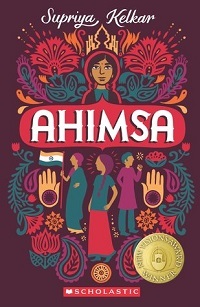 It’s impressive how much cultural and historical detail Supriya Kelkar has worked into her debut novel without sacrificing pacing. Ahimsa moves along quickly, its title referring to the principle of non-violent resistance promoted by Gandhi during India’s struggle for independence from Britain.
It’s impressive how much cultural and historical detail Supriya Kelkar has worked into her debut novel without sacrificing pacing. Ahimsa moves along quickly, its title referring to the principle of non-violent resistance promoted by Gandhi during India’s struggle for independence from Britain. In 1942, Shailaja Joshi, a young wife and mother, heeds Gandhi’s request that a member of each Indian family should take part in their country’s freedom movement. She has the support of her husband, and quits her job working for a British officer, although the elderly uncle who lives with the family feels her efforts will ultimately be futile. However, the action is seen not from Shailaja’s viewpoint but that of her ten-year-old daughter, Anjali.
While Ahimsa is geared toward middle-grade readers, it can be appreciated by older readers as well, adults included. I didn’t feel like any of the language or concepts were oversimplified. The novel covers a dramatic and traumatic time in India’s history, with tensions rising between India and Britain, between Hindus and Muslims, within India’s rigid caste system, and between the courageous people who seek change and those who resist it just as strongly. It’s remarkable how well these serious conflicts are articulated within a book for young readers.
The story follows Anjali as she adjusts her perceptions while her world and family transform in front of her. She doesn’t understand when her mother burns their gorgeously colored, British-made saris, instead making them wear plainer, homespun cotton khadis because they’re locally woven. Through her mother, Anjali also has her eyes opened to the living situation of her family’s toilet-cleaner, Mohan, a boy who was forced into that role simply for being born into the lowest caste.
Both Anjali and Shailaja make mistakes in their approach to change. In keeping with reality, Kelkar doesn’t present the adults as having all the answers. This new era in India is a learning experience for the entire family, and there are universal lessons worth absorbing, too, like the need to respect and use the name that a group prefers to call themselves (for example: Dalits for Mohan’s caste, rather than the insulting term Untouchables or Gandhi’s term for them, Harijan). Anjali’s best friend is a Muslim boy, Irfaan, and the plot also demonstrates how their close relationship is affected when Hindu-Muslim riots break out in their town.
The two-page glossary at the end could easily have been expanded, but overall this is an engaging novel based on the experiences of the author’s great-grandmother (Shailaja in the story). For historical fiction readers and librarians interested in experiencing India's history through young eyes, or adding an #ownvoices story to their collection, Ahimsa would be a good choice.
Ahimsa was published by Tu Books, an imprint of Lee & Low, in 2017; I received a copy through LibraryThing's FirstReads program earlier this year.
Published on November 23, 2018 04:00
November 18, 2018
New England Gothic: The Witch of Willow Hall
 Tapping into recent interests in Gothic fiction, Fox’s uneven debut focuses on the middle daughter of a wealthy New England family who doesn’t realize she inherited a talent for witchcraft. As a child in 1812 Boston, Lydia Montrose unsuspectingly calls upon her latent powers to take revenge against a cruel neighbor boy. Nine years later, she and her family are forced to leave the city following rumors of her older sister Catherine’s shocking conduct.
Tapping into recent interests in Gothic fiction, Fox’s uneven debut focuses on the middle daughter of a wealthy New England family who doesn’t realize she inherited a talent for witchcraft. As a child in 1812 Boston, Lydia Montrose unsuspectingly calls upon her latent powers to take revenge against a cruel neighbor boy. Nine years later, she and her family are forced to leave the city following rumors of her older sister Catherine’s shocking conduct. They take up residence in Willow Hall, a large mansion in the distant town of New Oldbury, where her father, investor in a local mill, hopes to make a fresh start. Lydia is close to her eight-year-old sister Emeline, and while they enjoy wandering the countryside, spiteful Catherine chafes at her forced isolation. As Lydia develops an interest in John Barrett, her father’s handsome business partner, Catherine’s jealousy asserts itself while she simultaneously flirts with John’s friend. Meanwhile, supernatural happenings at Willow Hall, which only Lydia can see, hint at its tragic past.
The story’s premise – a young woman coming to terms with abilities passed down from an accused Salem witch – is a clever one. Because the scenes focusing on this aspect are particularly strong, they should have been given greater prominence over the romance and toxic family drama. Fox is particularly skilled at conveying the creepy atmosphere when the dead emerge into the world of the living.
The secondary characters, including Lydia’s mother and father, feel rather thin, and the early industrial New England setting could have been more sharply evoked through the characters’ actions and dialogue. The Montrose daughters’ attention to social proprieties comes and goes; maybe their odd conduct could be chalked up to lax parenting. Fans of historical horror may want to read the novel regardless, especially if they enjoyed Louisa Morgan’s A Secret History of Witches.
I reviewed this novel for November's Historical Novels Review. The Witch of Willow Hall was published by Graydon House in October. Judging by the Goodreads reviews, I'm in the minority with my reaction.
Published on November 18, 2018 04:30
November 12, 2018
A septet of recent & upcoming historical novels, all with the number seven
This doesn't qualify to be a trend, but it's a curious recent phenomenon. The number seven figures prominently in classical history, mythology, and literature; it's thought of as a particularly lucky or magical number. So perhaps it's no surprise that authors are channeling its power within their fiction. Here are — of course — seven historical novels, all published in 2017 or after, which share this number in their titles (or series). How I came upon this interesting commonality is something you might call sevendipity. After finding the Grames novel on Edelweiss last week, its title reminded me of another, and then another... there are a few that I think readers will have trouble keeping straight!
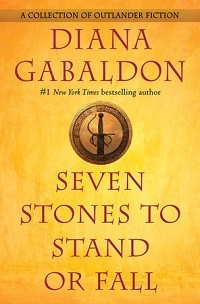
Seven fictional tales set in the same historical worlds as Gabaldon's Outlander stories set in the 18th century and later; two are original to this book. Delacorte, 2017. [see on Goodreads]
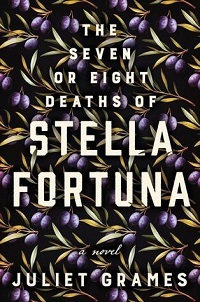
The story of Stella Fortuna, a young woman in early 20th-century Italy who seems unusually accident-prone, and her long, complicated relationship with her sister, both in Italy and America over the next century. Ecco, forthcoming May 2019. [see on Goodreads]
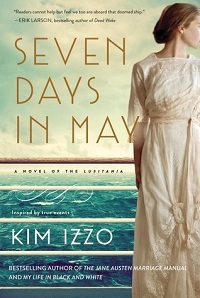
A moving historical novel set aboard the Lusitania during WWI and based partly on family history. HarperCollins, 2017. [see on Goodreads]

Part of James's Desperate Duchesses series of Georgian- and Regency-set historical romances, this entry focuses on an earl's son in need of a governess for his siblings, and an aristocratic woman who runs a governess agency Avon, 2017. [see on Goodreads]

A young woman tapped to write an aging film star's biography is drawn into her stories of the lost world of 1950s Hollywood and all of her past marriages. Atria, 2017. [see on Goodreads]
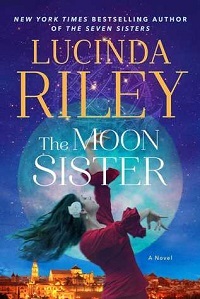
This is the fifth and latest in Riley's Seven Sisters series (the first book had the title The Seven Sisters) about a group of women, adopted by the same man as babies, who leave for adventures around the world in search of their birth heritage. Their family stories take readers back to the early 20th century. Atria, forthcoming February 2019. [see on Goodreads]
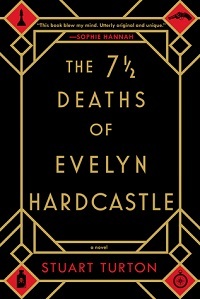
Set around a 1920s country house party, this unusual murder mystery features a protagonist who inhabits the body of different characters and is forced to relive events of the fateful day of Evelyn's death until he solves the crime. Sourcebooks, 2018. [see on Goodreads]

Seven fictional tales set in the same historical worlds as Gabaldon's Outlander stories set in the 18th century and later; two are original to this book. Delacorte, 2017. [see on Goodreads]

The story of Stella Fortuna, a young woman in early 20th-century Italy who seems unusually accident-prone, and her long, complicated relationship with her sister, both in Italy and America over the next century. Ecco, forthcoming May 2019. [see on Goodreads]

A moving historical novel set aboard the Lusitania during WWI and based partly on family history. HarperCollins, 2017. [see on Goodreads]

Part of James's Desperate Duchesses series of Georgian- and Regency-set historical romances, this entry focuses on an earl's son in need of a governess for his siblings, and an aristocratic woman who runs a governess agency Avon, 2017. [see on Goodreads]

A young woman tapped to write an aging film star's biography is drawn into her stories of the lost world of 1950s Hollywood and all of her past marriages. Atria, 2017. [see on Goodreads]

This is the fifth and latest in Riley's Seven Sisters series (the first book had the title The Seven Sisters) about a group of women, adopted by the same man as babies, who leave for adventures around the world in search of their birth heritage. Their family stories take readers back to the early 20th century. Atria, forthcoming February 2019. [see on Goodreads]

Set around a 1920s country house party, this unusual murder mystery features a protagonist who inhabits the body of different characters and is forced to relive events of the fateful day of Evelyn's death until he solves the crime. Sourcebooks, 2018. [see on Goodreads]
Published on November 12, 2018 05:00
November 9, 2018
Great Lakes Gothic: Wendy Webb's Daughters of the Lake
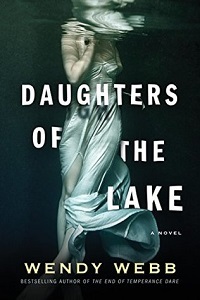 Wendy Webb’s newest Gothic novel is partly a paranormal time-slip with occasional ghosts and spooky happenings. It’s also a multi-period saga about doomed lovers and a long-unsolved mystery full of atmospheric Great Lakes folklore. If any of these elements appeal, dive right in!
Wendy Webb’s newest Gothic novel is partly a paranormal time-slip with occasional ghosts and spooky happenings. It’s also a multi-period saga about doomed lovers and a long-unsolved mystery full of atmospheric Great Lakes folklore. If any of these elements appeal, dive right in! Present day: the body of an auburn-haired young woman wearing a vintage nightgown is released by Lake Superior, a baby clutched in her cold arms. Kate Granger reacts badly to the discovery, since she’s been having dreams from the woman’s viewpoint. After traveling to the tourist town of Wharton, where her cousin Simon has transformed their wealthy great-grandfather’s mansion into a B&B, Kate learns the mystery has followed her there.
As Kate recovers from a broken marriage, Simon’s caring attitude helps ground her; so does Nick Adams, a handsome African-American cop. An alternating thread follows Addie Cassatt, the young woman from the lake, from her unusual birth circumstances in 1889 to her loving marriage and tragic last days. Addie’s ancestors had close ties with the lake, which somehow protected them. A similar thread of destiny links Addie to Jess Stewart, a boy who saves her life.
I rarely read novels straight through in a day, but – pardon the watery descriptions – the fluid writing swept me into its wake, keeping me reading even when thought I knew where the story led. The plot moves from present to past and back, sometimes popping unexpectedly into minor characters’ viewpoints, but the transitions are smooth.
Highlights include the realistic dialogue, warmhearted characters (especially Simon), and depictions of early 20th-century Midwestern architecture, social happenings, and attitudes. How many old mysteries arise from the fact that our 19th-century forebears were reluctant to air their personal woes? That historical sentiment rings absolutely true. The story isn’t out-and-out terrifying like Webb’s earlier Gothics, but it’s still an engrossing supernatural tale.
Daughters of the Lake was published by Lake Union on November 1; it's currently the #1 bestseller in Amazon's Gothic Fiction category. I reviewed it for November's Historical Novels Review.
Published on November 09, 2018 04:47
November 4, 2018
The Monastery Murders by E. M. Powell, a deadly excursion to 12th-century Yorkshire
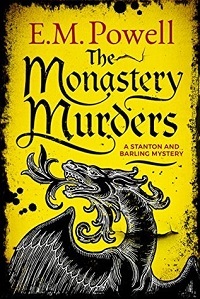 The second outing for the talented detective team of Aelred Barling, royal clerk to Henry II, and his assistant Hugo Stanton is full of chilling atmosphere, both literal and figurative. At the request of Ranulf de Glanville, Justiciar of England in 1177 AD, both are sent north from London, a ten days’ ride in darkest winter, to the remote Cistercian house of Fairmore Abbey in Yorkshire. On Christmas Eve, the mild-mannered sacrist, Brother Cuthbert, was found murdered in a pretty horrific way.
The second outing for the talented detective team of Aelred Barling, royal clerk to Henry II, and his assistant Hugo Stanton is full of chilling atmosphere, both literal and figurative. At the request of Ranulf de Glanville, Justiciar of England in 1177 AD, both are sent north from London, a ten days’ ride in darkest winter, to the remote Cistercian house of Fairmore Abbey in Yorkshire. On Christmas Eve, the mild-mannered sacrist, Brother Cuthbert, was found murdered in a pretty horrific way. Abbot Philip, who’d known Barling during their youthful studies in Paris, requests his help specifically. While Stanton’s an easygoing sort who enjoys ale, convivial gatherings, and women, Barling is a straitlaced fellow who prefers time at his writing desk. When it comes to their feelings about this mission, though, they’re in agreement: neither wants to go.
When they arrive at the monastery, which is nestled deep into a rocky valley, they discover the place in turmoil, although few openly admit it. Tension spills out from multiple avenues. The older monks chafe at Philip’s election to his current role, the lay brothers resent being treated like mindless workhorses, and many feel uncomfortable breaking their vows of silence to respond to outsiders’ questions. Then a second murder occurs, and another. Each is creatively gruesome.
This strongly plotted mystery is definitely not a cozy! The thawing relationship between Barling and Stanton, already begun after their joint success in The King’s Justice , helps lighten their increasingly heavy investigative burden. Barling sees it as his duty to impart periodic lessons that Stanton hates, but they acknowledge the other’s strengths and gifts. The final outcome, which arrives after a high body count, depends on their bond of mutual trust and is gratifying in that sense, and others.
The cast list isn’t solely male, and the presence of women in this highly regulated masculine environment creates disarray that’s first entertaining, and later dangerous. Hints at secrets about Barling’s past, which he’d rather not think about, contribute another intrigue-filled layer. Sometimes later volumes in a mystery series reveal the truth about earlier whodunits, but fortunately this isn't the case here. Readers who haven’t picked up book one, which I also recommend, won't discover any clues about how that mystery was resolved.
The Monastery Murders is published by Thomas & Mercer, Amazon's crime/thriller imprint, in September. Thanks to the author (who I'd interviewed about book one, The King's Justice) for sending me a NetGalley widget.
Published on November 04, 2018 07:30
October 31, 2018
The Splendor Before the Dark, the conclusion to Margaret George's saga of Emperor Nero's life
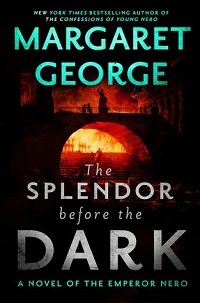 “You had the courage to be openly yourself . . . to be an artist in spite of ridicule and opposition,” says one woman to Emperor Nero, simultaneously describing his charismatic appeal and tragic flaw.
“You had the courage to be openly yourself . . . to be an artist in spite of ridicule and opposition,” says one woman to Emperor Nero, simultaneously describing his charismatic appeal and tragic flaw.Covering his tumultuous last four years, George’s invigorating sequel to The Confessions of Young Nero (2017) opens in AD 64 with Rome’s Great Fire. Although he wasn’t there when it started, and assists refugees afterward, rumors imply otherwise.
His architectural designs for rebuilding the city are dazzling but drain the treasury. Despite his political naïveté and other faults, Nero’s narrative voice never fails to captivate because of his full-throated appreciation for art and life in general.
He cherishes his inner circle, including his beloved wife, Poppaea, while others betray him. He achieves his dream of competitive chariot racing, and Greece’s scenic wonders are gloriously brought into view as he brings a large entourage there for an extended tour of the sacred games, to the Senate’s dismay. Although Nero acknowledges the competing aspects of his complicated nature, he fails to balance them.
George’s nuanced, well-researched character study depicts his candid inner self and how the performance of his short life played out on the Roman Empire’s vast stage. It succeeds admirably in persuading readers to reconsider their impressions of the infamous Nero.
The Splendor Before the Dark will be published next week by Berkley; I wrote this starred review for Booklist's October 1 issue. It's almost 600pp long, and the first book was over 500pp, but they move quickly and will whisk you into Nero's captivating world. The book's title is perfect, too.
Published on October 31, 2018 05:24
October 25, 2018
Children of God by Lars Petter Sveen, an unusual look at New Testament times
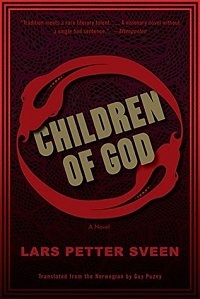 The first English-language release by Norwegian best-seller and prize-winner Sveen contains interconnected stories set in New Testament times. Both historical fiction and allegory, the book is insightful in both contexts. It focuses primarily on ordinary people on society’s edges—prostitutes, thieves, the lost and suffering—although Jesus and other biblical figures appear and interact with them.
The first English-language release by Norwegian best-seller and prize-winner Sveen contains interconnected stories set in New Testament times. Both historical fiction and allegory, the book is insightful in both contexts. It focuses primarily on ordinary people on society’s edges—prostitutes, thieves, the lost and suffering—although Jesus and other biblical figures appear and interact with them.In the shocking initial tale, Roman soldiers follow King Herod’s orders to kill Bethlehem’s infant boys but question their mission’s morality. A blind, elderly man persuades them otherwise; he shows up to sow discord in many other stories. A healing miracle occurs, but its effect later slips. Two sisters’ lives take dramatic turns, and the Samaritan woman is seen from a new viewpoint.
The blind stranger’s statements (e.g., “I’m what stays in the shadows while the light falls elsewhere”) become repetitive, but the stories’ consistent message speaks to the insidiousness of evil and self-doubt. While reflecting individuals’ long-ago struggles for faith, autonomy, and survival, Sveen’s linked stories also have significant modern relevance that reaches a powerful crescendo by the book’s end.
Children of God, translated into English by Guy Puzey, is published this month by Graywolf in trade paperback and ebook. This review first appeared in Booklist's 10/15 issue. For a different (and lengthier) perspective, it was also reviewed in this past weekend's New York Times.
Published on October 25, 2018 06:00
October 22, 2018
Hard times: Laurie Loewenstein's Death of a Rainmaker, a mystery set in Dust Bowl Oklahoma
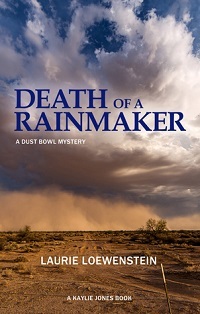 When times turn desperate, tensions rise, and people start seeking an outlet for their suffering. In this sense, the Depression-era Dust Bowl feels like a classic setting for a murder mystery, although surprisingly few authors have taken advantage of it.
When times turn desperate, tensions rise, and people start seeking an outlet for their suffering. In this sense, the Depression-era Dust Bowl feels like a classic setting for a murder mystery, although surprisingly few authors have taken advantage of it. Here, just like in her first novel, Unmentionables, Laurie Loewenstein offers vivid storytelling and a fine eye for evoking small-town life in America’s heartland.
In August 1935, it’s been 240 days since the last rainfall, and the leading citizens of Vermillion, Oklahoma, the seat of Jackson County, seek out hope where they can find it. Roland Coombs arrives in town with promising testimonials to his skills in enticing clouds to let loose their precious drops of water. But less than a day after he shoots shells packed with TNT into the heavens, his body is found in the alley next to the Jewel Movie House, lying under a pile of dirt after an intense dust storm.
The need to solve the crime creates difficulties for longtime sheriff Temple Jennings, who’s up for re-election shortly. He’s also under pressure to start foreclosure proceedings against the Fullers, a hardworking farm couple who’d tried hard to make a go of their land but failed, thanks to the weather. When circumstances lead Temple to pinpoint Carmine, a young man from the nearby CCC camp, as the rainmaker’s murderer, the decision raises unease in those closest to him.
The novel excels in depicting characters and relationships. Temple and his wife, Etha, are devoted to one another, but Etha sees qualities of her late son in Carmine and has reason to believe him innocent. Having lost a child, Etha is horrified by stories of families forcing their older children to leave home since they can’t feed them any more. Then there’s Temple’s deputy, Ed McCance, an earnest former CCCer who doesn’t want the organization’s name tarnished. Just when you think the plot is heading in one direction, the crime’s resolution comes as a surprise.
There are some quirky local traditions, such as the “rarely used” (per Etha) small jail cell in a corner of the Jenningses’ kitchen, and a host of personalities depicted without stereotype, including Chester Benton, the blind and dapper theater owner disgruntled by how the murder leads to lost sales.
The atmosphere of Dust Bowl Oklahoma seeps through the pages, and the descriptions of these tough times become yet stronger when they're made personal: the “worn and brittle” men inhabiting a once-prosperous rooming house, a former destination for westward dreamers, and a family’s daisy-patterned china, the plates they ate on every day, now “nothing more than secondhand plates to some stranger, wiped clean of meaning.”
Death of a Rainmaker was published by Kaylie Jones Books this month; thanks to the publisher for the review copy.
Published on October 22, 2018 13:00
October 17, 2018
Review of The Game of Hope by Sandra Gulland, a novel about Hortense de Beauharnais, Napoleon's stepdaughter
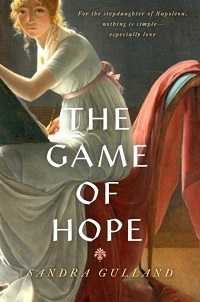 “The key to survival is flexibility.” These words of wisdom, spoken by the drawing instructor at Maîtresse Campan’s boarding school for girls, prove prescient for his pupil, Hortense de Beauharnais. At the beginning of Gulland’s elegantly written young adult novel, set in France in 1798, Hortense is just fifteen. She and her cousin Ém and close friend Adèle (called Mouse), Maîtresse Campan’s niece, form a tightly knit threesome. They attend their lessons and look after the school’s younger charges. However, their mutually supportive group is still part of the larger world, and Gulland carefully presents the historical backdrop as Hortense would have experienced it.
“The key to survival is flexibility.” These words of wisdom, spoken by the drawing instructor at Maîtresse Campan’s boarding school for girls, prove prescient for his pupil, Hortense de Beauharnais. At the beginning of Gulland’s elegantly written young adult novel, set in France in 1798, Hortense is just fifteen. She and her cousin Ém and close friend Adèle (called Mouse), Maîtresse Campan’s niece, form a tightly knit threesome. They attend their lessons and look after the school’s younger charges. However, their mutually supportive group is still part of the larger world, and Gulland carefully presents the historical backdrop as Hortense would have experienced it. It’s been a mere four years since the Reign of Terror, in which many French aristocrats were executed via guillotine. Hortense’s father was one of them, and she suffers terrible nightmares and worries that she played a role in his death. Her ebullient mother, Rose, now married to General Bonaparte, has been obliged to reinvent herself as well; she now goes by Josephine, Bonaparte’s preferred name for her. Hortense’s brother Eugène is serving with Bonaparte in Egypt, and she writes him heartfelt letters that she’s unable to send. And then there’s her classmate Annunziata, Bonaparte’s rude younger sister, who suddenly decides to call herself Caroline.
Hortense’s lively and warm nature makes her an appealing narrator, and although more colorful personalities threaten to outshine her, she holds her own. Her coming of age and the accompanying shifts in her relationships are among the book’s highlights. While Josephine writes to her daughter that “we’re more like the best of friends,” she also counsels her that “it’s wise not to linger” in an unmarried state, since “a girl quickly loses her bloom.” This is difficult advice for a romantically-inclined teenager to hear, especially when she has a crush on a handsome, older officer.
Over the course of the book, Hortense gains greater perspective on the stepfather she disdains, the father she adored but barely knew, and even her challenging schoolmate, Caroline. Her frequent exclamations (aie!) and parenthetical asides sometimes make her seem younger than her age. That said, the novel strikes the right balance between Hortense’s youthful innocence and the tense uncertainty of the era. It creates a convincing portrait of a young woman learning about her world, navigating through limited choices, and fulfilling her ambitions as much as she’s able.
The Game of Hope was published by Viking Books for Young Readers in June (384pp, hardcover and ebook); I read it from a personal copy. This review forms part of the author's blog tour with Historical Fiction Virtual Book Tours.
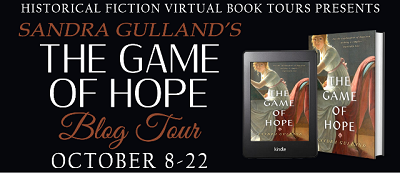
During the Blog Tour, we will be giving away a copy of The Game of Hope to one lucky reader! To enter, please enter via the Gleam form below.
Giveaway Rules:
– Giveaway ends at 11:59pm EST on October 22nd. You must be 18 or older to enter.
– Giveaway is open to US Only.
– Only one entry per household.
– All giveaway entrants agree to be honest and not cheat the systems; any suspect of fraud is decided upon by blog/site owner and the sponsor, and entrants may be disqualified at our discretion.
– Winner has 48 hours to claim prize or new winner is chosen. Good luck!
Game of Hope
Published on October 17, 2018 05:00



